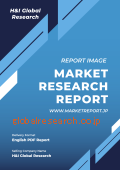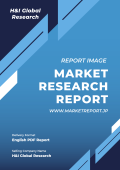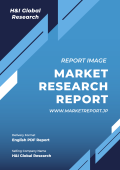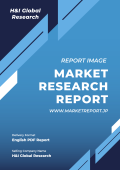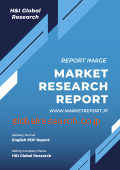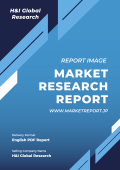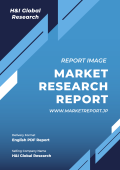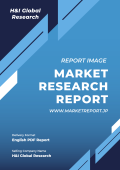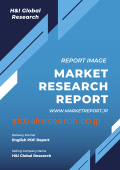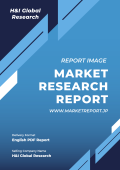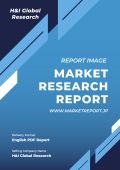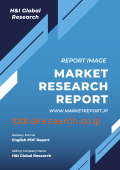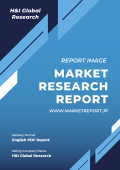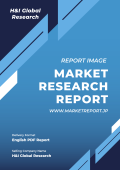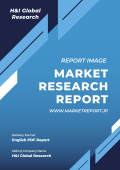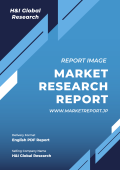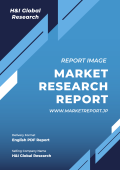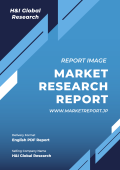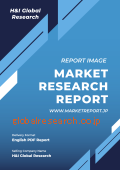| ■ 英語タイトル:Technical Textile Market by Material (Natural Fiber, Synthetic Polymers/Fibers, Mineral Fiber, Regenerated Fiber, Metal Fiber, and Others), Process (Woven, Non-woven, and Others), Application (MobilTech, InduTech, SporTech, BuildTech, HomeTech, ClothTech, MediTech, AgroTech, ProTech, PackTech, GeoTech, OekoTech), and Region 2023-2028
|
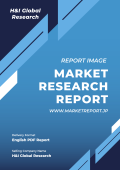 | ■ 発行会社/調査会社:IMARC
■ 商品コード:IMARC23JLY267
■ 発行日:2023年7月
■ 調査対象地域:グローバル
■ 産業分野:工業材料
■ ページ数:141
■ レポート言語:英語
■ レポート形式:PDF
■ 納品方式:Eメール
|
■ 販売価格オプション
(消費税別)
Warning: foreach() argument must be of type array|object, null given in
/home/hni-mkt/globalresearch.co.jp/public_html/wp-content/themes/twentyfourteen/content.php on line
189
Warning: foreach() argument must be of type array|object, null given in
/home/hni-mkt/globalresearch.co.jp/public_html/wp-content/themes/twentyfourteen/content.php on line
193
Warning: foreach() argument must be of type array|object, null given in
/home/hni-mkt/globalresearch.co.jp/public_html/wp-content/themes/twentyfourteen/content.php on line
197
Warning: Undefined variable $YEN_USD in
/home/hni-mkt/globalresearch.co.jp/public_html/wp-content/themes/twentyfourteen/content.php on line
212
Warning: Undefined variable $YEN_USD in
/home/hni-mkt/globalresearch.co.jp/public_html/wp-content/themes/twentyfourteen/content.php on line
214
Warning: Undefined variable $YEN_USD in
/home/hni-mkt/globalresearch.co.jp/public_html/wp-content/themes/twentyfourteen/content.php on line
216
※販売価格オプションの説明はこちらで、ご購入に関する詳細案内はご利用ガイドでご確認いただけます。
※お支払金額は「換算金額(日本円)+消費税+配送料(Eメール納品は無料)」です。
※Eメールによる納品の場合、通常ご注文当日~2日以内に納品致します。
※レポート納品後、納品日+5日以内に請求書を発行・送付致します。(請求書発行日より2ヶ月以内の銀行振込条件、カード払いも可能)
※IMARC社の概要及び新刊レポートはこちらでご確認いただけます。
*** レポート概要(サマリー)***IMARC社は、2022年1,950.8億ドルであった世界のテクニカルテキスタイル市場規模が、予測期間中(2023年~2028年)年平均4.99%成長し、2028年には2,626億ドルに達すると予測しています。当調査資料では、テクニカルテキスタイルの世界市場を調査・分析し、序論、範囲・調査手法、エグゼクティブサマリー、イントロダクション、素材別(天然繊維、合成ポリマー/繊維、ミネラルファイバー、再生繊維、その他)分析、プロセス別(織物、不織布、その他)分析、用途別(モービルテック、インデュテック、スポルテック、ビルドテック、ホームテック)分析、地域別(北米、アジア太平洋、ヨーロッパ、中南米、中東/アフリカ)分析、推進要因・阻害要因・機会、バリューチェーン分析、ファイブフォース分析、価格分析、競争状況などの項目を掲載しています。なお、当市場の主要企業には、3M Company、Asahi Kasei Advance Corporation (Asahi Kasei Corporation)、Baltex、Barry Global Inc.、DuPont de Nemours Inc.、Duvaltex Inc.、Freudenberg & Co. KG、Hindustan Mills Limited、HUESKER Synthetic GmbH、Huntsman Corporation、Milliken & Companyなどが含まれています。
・序論
・範囲・調査手法
・エグゼクティブサマリー
・イントロダクション
・世界のテクニカルテキスタイル市場規模:素材別
- 天然繊維の市場規模
- 合成ポリマー/繊維の市場規模
- ミネラルファイバーの市場規模
- 再生繊維の市場規模
-その他素材の市場規模
・世界のテクニカルテキスタイル市場規模:プロセス別
- 織物の市場規模
- 不織布の市場規模
- その他プロセスの市場規模
・世界のテクニカルテキスタイル市場規模:用途別
- モービルテックにおける市場規模
- インデュテックにおける市場規模
- スポルテックにおける市場規模
- ビルドテックにおける市場規模
- ホームテックにおける市場規模
・世界のテクニカルテキスタイル市場規模:地域別
- 北米のテクニカルテキスタイル市場規模
- アジア太平洋のテクニカルテキスタイル市場規模
- ヨーロッパのテクニカルテキスタイル市場規模
- 中南米のテクニカルテキスタイル市場規模
- 中東/アフリカのテクニカルテキスタイル市場規模
・推進要因・阻害要因・機会
・バリューチェーン分析
・ファイブフォース分析
・価格分析
・競争状況 |
Market Overview:
The global technical textile market size reached US$ 195.08 Billion in 2022. Looking forward, IMARC Group expects the market to reach US$ 262.60 Billion by 2028, exhibiting a growth rate (CAGR) of 4.99 % during 2023-2028. The increasing construction of residential and commercial buildings, rising prevalence of chronic diseases, and the growing utilization of technical textiles across different industry verticals represent some of the key factors driving the market.
Technical textiles are used for specific technical functions and applications beyond traditional clothing, aesthetics, and furnishing. They are lightweight, durable, robust, and resistant to abrasion and extreme climatic conditions. They exhibit waterproofing and breathability properties and protect against harmful ultraviolet (UV) radiation. They are used in the manufacturing of airbags, composites, smart textiles, geotextiles, sensors, and wearable technology. They are also utilized in the aerospace, automotive, sports, construction, and agriculture industries. Besides this, as they have antimicrobial properties and reduce body odors, technical textiles find extensive applications in the healthcare sector in the production of medical implants and apparel, such as gowns, masks, and gloves.
Technical Textile Market Trends:
At present, rapid urbanization, expanding global population, and increasing construction and remodeling activities across residential and commercial sectors represent one of the primary factors stimulating market growth. Additionally, significant growth in the automotive industry and the widespread adoption of technical textiles in the manufacturing of lightweight vehicles with optimal fuel efficiency are offering lucrative opportunities to manufacturers. Technical textiles are employed in manufacturing numerous components of automobiles, which include air and oil filters, carpets, and battery separators. Along with this, the increasing sales of hybrid and electric vehicles (H/EVs) are driving product demand across the globe. Apart from this, the rising disposable medical clothes, along with the expansion of hospitals and healthcare centers worldwide, are contributing to market growth. Furthermore, the integration of advanced technologies in textile manufacturing procedures for the development of innovative technical textiles with more enhanced features is favoring market growth. Additionally, rising cases of construction site accidents and the growing prevalence of several infectious diseases are catalyzing the demand for personal protective equipment (PPE), which is offering a favorable market outlook. Moreover, rising environmental concerns are increasing the demand for sustainable and eco-friendly technical textiles across industries. Besides this, the growing participation of individuals in sports is resulting in the expanding product utilization. Furthermore, the rising focus of leading market players on strategic collaborations and mergers and acquisitions to expand their market reach and improve overall profitability is expected to propel the market growth in the coming years.
Key Market Segmentation:
IMARC Group provides an analysis of the key trends in each segment of the global technical textile market, along with forecasts at the global, regional, and country levels from 2023-2028. Our report has categorized the market based on material, process, and application.
Material Insights:
Natural Fiber
Cotton
Wool
Others
Synthetic Polymers/Fibers
Polyether Sulfone (PES)
Polyamide (PA)
Polyacrylonitrile (PAN)
Polypropylene (PP)
Polyester
Others
Mineral Fiber
Asbestos
Glass Fiber
Ceramic Fiber
Regenerated Fiber
Rayon
Acetate
Metal Fiber
Others
The report has provided a detailed breakup and analysis of the technical textile market based on the material. This includes natural fiber [cotton wool, and others]; synthetic polymers/fibers [polyether sulfone (PES), polyamide (PA), polyacrylonitrile (PAN), polypropylene (PP), polyester, and others]; mineral fiber [asbestos, glass fiber and ceramic fiber]; regenerated fiber [rayon and acetate]; metal fiber; and others. According to the report, synthetic polymers/fibers represented the largest segment.
Process Insights:
Woven
Non-woven
Others
The report has provided a detailed breakup and analysis of the technical textile market based on the process. This includes woven, non-woven, and others. According to the report, non-woven accounted for the largest market share.
Application Insights:
MobilTech
InduTech
SporTech
BuildTech
HomeTech
ClothTech
MediTech
AgroTech
ProTech
PackTech
GeoTech
OekoTech
A detailed breakup and analysis of the technical textile market based on the application has also been provided in the report. This includes MobilTech, InduTech, SporTech, BuildTech, HomeTech, ClothTech, MediTech, AgroTech, ProTech, PackTech, GeoTech, and OekoTech. According to the report, MobilTech accounted for the largest market share.
Regional Insights:
North America
United States
Canada
Asia-Pacific
China
Japan
India
South Korea
Australia
Indonesia
Others
Europe
Germany
France
United Kingdom
Italy
Spain
Russia
Others
Latin America
Brazil
Mexico
Others
Middle East and Africa
The report has also provided a comprehensive analysis of all the major regional markets, which include North America (the United States and Canada); Asia Pacific (China, Japan, India, South Korea, Australia, Indonesia, and others); Europe (Germany, France, the United Kingdom, Italy, Spain, Russia and others); Latin America (Brazil, Mexico, and others); and the Middle East and Africa. According to the report, Asia Pacific was the largest market for technical textile. Some of the factors driving the Asia Pacific technical textile market included rapid industrialization, availability of low cost raw materials, rising awareness among individuals about the benefits offered by technical textile, such as durability, flexibility, and strength, etc.
Competitive Landscape:
The report has also provided a comprehensive analysis of the competitive landscape in the global technical textile market. Detailed profiles of all major companies have been provided. Some of the companies covered include 3M Company, Asahi Kasei Advance Corporation (Asahi Kasei Corporation), Baltex, Barry Global Inc., DuPont de Nemours Inc., Duvaltex Inc., Freudenberg & Co. KG, Hindustan Mills Limited, HUESKER Synthetic GmbH, Huntsman Corporation, Milliken & Company, SKAPS Industries, SRF Limited (Kama Holdings Ltd.), etc. Kindly note that this only represents a partial list of companies, and the complete list has been provided in the report.
Market Overview:
The global technical textile market size reached US$ 195.08 Billion in 2022. Looking forward, IMARC Group expects the market to reach US$ 262.60 Billion by 2028, exhibiting a growth rate (CAGR) of 4.99 % during 2023-2028. The increasing construction of residential and commercial buildings, rising prevalence of chronic diseases, and the growing utilization of technical textiles across different industry verticals represent some of the key factors driving the market.
Technical textiles are used for specific technical functions and applications beyond traditional clothing, aesthetics, and furnishing. They are lightweight, durable, robust, and resistant to abrasion and extreme climatic conditions. They exhibit waterproofing and breathability properties and protect against harmful ultraviolet (UV) radiation. They are used in the manufacturing of airbags, composites, smart textiles, geotextiles, sensors, and wearable technology. They are also utilized in the aerospace, automotive, sports, construction, and agriculture industries. Besides this, as they have antimicrobial properties and reduce body odors, technical textiles find extensive applications in the healthcare sector in the production of medical implants and apparel, such as gowns, masks, and gloves.
Technical Textile Market Trends:
At present, rapid urbanization, expanding global population, and increasing construction and remodeling activities across residential and commercial sectors represent one of the primary factors stimulating market growth. Additionally, significant growth in the automotive industry and the widespread adoption of technical textiles in the manufacturing of lightweight vehicles with optimal fuel efficiency are offering lucrative opportunities to manufacturers. Technical textiles are employed in manufacturing numerous components of automobiles, which include air and oil filters, carpets, and battery separators. Along with this, the increasing sales of hybrid and electric vehicles (H/EVs) are driving product demand across the globe. Apart from this, the rising disposable medical clothes, along with the expansion of hospitals and healthcare centers worldwide, are contributing to market growth. Furthermore, the integration of advanced technologies in textile manufacturing procedures for the development of innovative technical textiles with more enhanced features is favoring market growth. Additionally, rising cases of construction site accidents and the growing prevalence of several infectious diseases are catalyzing the demand for personal protective equipment (PPE), which is offering a favorable market outlook. Moreover, rising environmental concerns are increasing the demand for sustainable and eco-friendly technical textiles across industries. Besides this, the growing participation of individuals in sports is resulting in the expanding product utilization. Furthermore, the rising focus of leading market players on strategic collaborations and mergers and acquisitions to expand their market reach and improve overall profitability is expected to propel the market growth in the coming years.
Key Market Segmentation:
IMARC Group provides an analysis of the key trends in each segment of the global technical textile market, along with forecasts at the global, regional, and country levels from 2023-2028. Our report has categorized the market based on material, process, and application.
Material Insights:
Natural Fiber
Cotton
Wool
Others
Synthetic Polymers/Fibers
Polyether Sulfone (PES)
Polyamide (PA)
Polyacrylonitrile (PAN)
Polypropylene (PP)
Polyester
Others
Mineral Fiber
Asbestos
Glass Fiber
Ceramic Fiber
Regenerated Fiber
Rayon
Acetate
Metal Fiber
Others
The report has provided a detailed breakup and analysis of the technical textile market based on the material. This includes natural fiber [cotton wool, and others]; synthetic polymers/fibers [polyether sulfone (PES), polyamide (PA), polyacrylonitrile (PAN), polypropylene (PP), polyester, and others]; mineral fiber [asbestos, glass fiber and ceramic fiber]; regenerated fiber [rayon and acetate]; metal fiber; and others. According to the report, synthetic polymers/fibers represented the largest segment.
Process Insights:
Woven
Non-woven
Others
The report has provided a detailed breakup and analysis of the technical textile market based on the process. This includes woven, non-woven, and others. According to the report, non-woven accounted for the largest market share.
Application Insights:
MobilTech
InduTech
SporTech
BuildTech
HomeTech
ClothTech
MediTech
AgroTech
ProTech
PackTech
GeoTech
OekoTech
A detailed breakup and analysis of the technical textile market based on the application has also been provided in the report. This includes MobilTech, InduTech, SporTech, BuildTech, HomeTech, ClothTech, MediTech, AgroTech, ProTech, PackTech, GeoTech, and OekoTech. According to the report, MobilTech accounted for the largest market share.
Regional Insights:
North America
United States
Canada
Asia-Pacific
China
Japan
India
South Korea
Australia
Indonesia
Others
Europe
Germany
France
United Kingdom
Italy
Spain
Russia
Others
Latin America
Brazil
Mexico
Others
Middle East and Africa
The report has also provided a comprehensive analysis of all the major regional markets, which include North America (the United States and Canada); Asia Pacific (China, Japan, India, South Korea, Australia, Indonesia, and others); Europe (Germany, France, the United Kingdom, Italy, Spain, Russia and others); Latin America (Brazil, Mexico, and others); and the Middle East and Africa. According to the report, Asia Pacific was the largest market for technical textile. Some of the factors driving the Asia Pacific technical textile market included rapid industrialization, availability of low cost raw materials, rising awareness among individuals about the benefits offered by technical textile, such as durability, flexibility, and strength, etc.
Competitive Landscape:
The report has also provided a comprehensive analysis of the competitive landscape in the global technical textile market. Detailed profiles of all major companies have been provided. Some of the companies covered include 3M Company, Asahi Kasei Advance Corporation (Asahi Kasei Corporation), Baltex, Barry Global Inc., DuPont de Nemours Inc., Duvaltex Inc., Freudenberg & Co. KG, Hindustan Mills Limited, HUESKER Synthetic GmbH, Huntsman Corporation, Milliken & Company, SKAPS Industries, SRF Limited (Kama Holdings Ltd.), etc. Kindly note that this only represents a partial list of companies, and the complete list has been provided in the report.
Key Questions Answered in This Report:
How has the global technical textile market performed so far, and how will it perform in the coming years?
What are the drivers, restraints, and opportunities in the global technical textile market?
What is the impact of each driver, restraint, and opportunity on the global technical textile market?
What are the key regional markets?
Which countries represent the most attractive technical textile market?
What is the breakup of the market based on the material?
Which is the most attractive material in the technical textile market?
What is the breakup of the market based on the process?
Which is the most attractive process in the technical textile market?
What is the breakup of the market based on the application?
Which is the most attractive application in the technical textile market?
What is the competitive structure of the global technical textile market?
Who are the key players/companies in the global technical textile market?
Market Overview:
The global technical textile market size reached US$ 195.08 Billion in 2022. Looking forward, IMARC Group expects the market to reach US$ 262.60 Billion by 2028, exhibiting a growth rate (CAGR) of 4.99 % during 2023-2028. The increasing construction of residential and commercial buildings, rising prevalence of chronic diseases, and the growing utilization of technical textiles across different industry verticals represent some of the key factors driving the market.
Technical textiles are used for specific technical functions and applications beyond traditional clothing, aesthetics, and furnishing. They are lightweight, durable, robust, and resistant to abrasion and extreme climatic conditions. They exhibit waterproofing and breathability properties and protect against harmful ultraviolet (UV) radiation. They are used in the manufacturing of airbags, composites, smart textiles, geotextiles, sensors, and wearable technology. They are also utilized in the aerospace, automotive, sports, construction, and agriculture industries. Besides this, as they have antimicrobial properties and reduce body odors, technical textiles find extensive applications in the healthcare sector in the production of medical implants and apparel, such as gowns, masks, and gloves.
Technical Textile Market Trends:
At present, rapid urbanization, expanding global population, and increasing construction and remodeling activities across residential and commercial sectors represent one of the primary factors stimulating market growth. Additionally, significant growth in the automotive industry and the widespread adoption of technical textiles in the manufacturing of lightweight vehicles with optimal fuel efficiency are offering lucrative opportunities to manufacturers. Technical textiles are employed in manufacturing numerous components of automobiles, which include air and oil filters, carpets, and battery separators. Along with this, the increasing sales of hybrid and electric vehicles (H/EVs) are driving product demand across the globe. Apart from this, the rising disposable medical clothes, along with the expansion of hospitals and healthcare centers worldwide, are contributing to market growth. Furthermore, the integration of advanced technologies in textile manufacturing procedures for the development of innovative technical textiles with more enhanced features is favoring market growth. Additionally, rising cases of construction site accidents and the growing prevalence of several infectious diseases are catalyzing the demand for personal protective equipment (PPE), which is offering a favorable market outlook. Moreover, rising environmental concerns are increasing the demand for sustainable and eco-friendly technical textiles across industries. Besides this, the growing participation of individuals in sports is resulting in the expanding product utilization. Furthermore, the rising focus of leading market players on strategic collaborations and mergers and acquisitions to expand their market reach and improve overall profitability is expected to propel the market growth in the coming years.
Key Market Segmentation:
IMARC Group provides an analysis of the key trends in each segment of the global technical textile market, along with forecasts at the global, regional, and country levels from 2023-2028. Our report has categorized the market based on material, process, and application.
Material Insights:
Natural Fiber
Cotton
Wool
Others
Synthetic Polymers/Fibers
Polyether Sulfone (PES)
Polyamide (PA)
Polyacrylonitrile (PAN)
Polypropylene (PP)
Polyester
Others
Mineral Fiber
Asbestos
Glass Fiber
Ceramic Fiber
Regenerated Fiber
Rayon
Acetate
Metal Fiber
Others
The report has provided a detailed breakup and analysis of the technical textile market based on the material. This includes natural fiber [cotton wool, and others]; synthetic polymers/fibers [polyether sulfone (PES), polyamide (PA), polyacrylonitrile (PAN), polypropylene (PP), polyester, and others]; mineral fiber [asbestos, glass fiber and ceramic fiber]; regenerated fiber [rayon and acetate]; metal fiber; and others. According to the report, synthetic polymers/fibers represented the largest segment.
Process Insights:
Woven
Non-woven
Others
The report has provided a detailed breakup and analysis of the technical textile market based on the process. This includes woven, non-woven, and others. According to the report, non-woven accounted for the largest market share.
Application Insights:
MobilTech
InduTech
SporTech
BuildTech
HomeTech
ClothTech
MediTech
AgroTech
ProTech
PackTech
GeoTech
OekoTech
A detailed breakup and analysis of the technical textile market based on the application has also been provided in the report. This includes MobilTech, InduTech, SporTech, BuildTech, HomeTech, ClothTech, MediTech, AgroTech, ProTech, PackTech, GeoTech, and OekoTech. According to the report, MobilTech accounted for the largest market share.
Regional Insights:
North America
United States
Canada
Asia-Pacific
China
Japan
India
South Korea
Australia
Indonesia
Others
Europe
Germany
France
United Kingdom
Italy
Spain
Russia
Others
Latin America
Brazil
Mexico
Others
Middle East and Africa
The report has also provided a comprehensive analysis of all the major regional markets, which include North America (the United States and Canada); Asia Pacific (China, Japan, India, South Korea, Australia, Indonesia, and others); Europe (Germany, France, the United Kingdom, Italy, Spain, Russia and others); Latin America (Brazil, Mexico, and others); and the Middle East and Africa. According to the report, Asia Pacific was the largest market for technical textile. Some of the factors driving the Asia Pacific technical textile market included rapid industrialization, availability of low cost raw materials, rising awareness among individuals about the benefits offered by technical textile, such as durability, flexibility, and strength, etc.
Competitive Landscape:
The report has also provided a comprehensive analysis of the competitive landscape in the global technical textile market. Detailed profiles of all major companies have been provided. Some of the companies covered include 3M Company, Asahi Kasei Advance Corporation (Asahi Kasei Corporation), Baltex, Barry Global Inc., DuPont de Nemours Inc., Duvaltex Inc., Freudenberg & Co. KG, Hindustan Mills Limited, HUESKER Synthetic GmbH, Huntsman Corporation, Milliken & Company, SKAPS Industries, SRF Limited (Kama Holdings Ltd.), etc. Kindly note that this only represents a partial list of companies, and the complete list has been provided in the report.
Market Overview:
The global technical textile market size reached US$ 195.08 Billion in 2022. Looking forward, IMARC Group expects the market to reach US$ 262.60 Billion by 2028, exhibiting a growth rate (CAGR) of 4.99 % during 2023-2028. The increasing construction of residential and commercial buildings, rising prevalence of chronic diseases, and the growing utilization of technical textiles across different industry verticals represent some of the key factors driving the market.
Technical textiles are used for specific technical functions and applications beyond traditional clothing, aesthetics, and furnishing. They are lightweight, durable, robust, and resistant to abrasion and extreme climatic conditions. They exhibit waterproofing and breathability properties and protect against harmful ultraviolet (UV) radiation. They are used in the manufacturing of airbags, composites, smart textiles, geotextiles, sensors, and wearable technology. They are also utilized in the aerospace, automotive, sports, construction, and agriculture industries. Besides this, as they have antimicrobial properties and reduce body odors, technical textiles find extensive applications in the healthcare sector in the production of medical implants and apparel, such as gowns, masks, and gloves.
Technical Textile Market Trends:
At present, rapid urbanization, expanding global population, and increasing construction and remodeling activities across residential and commercial sectors represent one of the primary factors stimulating market growth. Additionally, significant growth in the automotive industry and the widespread adoption of technical textiles in the manufacturing of lightweight vehicles with optimal fuel efficiency are offering lucrative opportunities to manufacturers. Technical textiles are employed in manufacturing numerous components of automobiles, which include air and oil filters, carpets, and battery separators. Along with this, the increasing sales of hybrid and electric vehicles (H/EVs) are driving product demand across the globe. Apart from this, the rising disposable medical clothes, along with the expansion of hospitals and healthcare centers worldwide, are contributing to market growth. Furthermore, the integration of advanced technologies in textile manufacturing procedures for the development of innovative technical textiles with more enhanced features is favoring market growth. Additionally, rising cases of construction site accidents and the growing prevalence of several infectious diseases are catalyzing the demand for personal protective equipment (PPE), which is offering a favorable market outlook. Moreover, rising environmental concerns are increasing the demand for sustainable and eco-friendly technical textiles across industries. Besides this, the growing participation of individuals in sports is resulting in the expanding product utilization. Furthermore, the rising focus of leading market players on strategic collaborations and mergers and acquisitions to expand their market reach and improve overall profitability is expected to propel the market growth in the coming years.
Key Market Segmentation:
IMARC Group provides an analysis of the key trends in each segment of the global technical textile market, along with forecasts at the global, regional, and country levels from 2023-2028. Our report has categorized the market based on material, process, and application.
Material Insights:
Natural Fiber
Cotton
Wool
Others
Synthetic Polymers/Fibers
Polyether Sulfone (PES)
Polyamide (PA)
Polyacrylonitrile (PAN)
Polypropylene (PP)
Polyester
Others
Mineral Fiber
Asbestos
Glass Fiber
Ceramic Fiber
Regenerated Fiber
Rayon
Acetate
Metal Fiber
Others
The report has provided a detailed breakup and analysis of the technical textile market based on the material. This includes natural fiber [cotton wool, and others]; synthetic polymers/fibers [polyether sulfone (PES), polyamide (PA), polyacrylonitrile (PAN), polypropylene (PP), polyester, and others]; mineral fiber [asbestos, glass fiber and ceramic fiber]; regenerated fiber [rayon and acetate]; metal fiber; and others. According to the report, synthetic polymers/fibers represented the largest segment.
Process Insights:
Woven
Non-woven
Others
The report has provided a detailed breakup and analysis of the technical textile market based on the process. This includes woven, non-woven, and others. According to the report, non-woven accounted for the largest market share.
Application Insights:
MobilTech
InduTech
SporTech
BuildTech
HomeTech
ClothTech
MediTech
AgroTech
ProTech
PackTech
GeoTech
OekoTech
A detailed breakup and analysis of the technical textile market based on the application has also been provided in the report. This includes MobilTech, InduTech, SporTech, BuildTech, HomeTech, ClothTech, MediTech, AgroTech, ProTech, PackTech, GeoTech, and OekoTech. According to the report, MobilTech accounted for the largest market share.
Regional Insights:
North America
United States
Canada
Asia-Pacific
China
Japan
India
South Korea
Australia
Indonesia
Others
Europe
Germany
France
United Kingdom
Italy
Spain
Russia
Others
Latin America
Brazil
Mexico
Others
Middle East and Africa
The report has also provided a comprehensive analysis of all the major regional markets, which include North America (the United States and Canada); Asia Pacific (China, Japan, India, South Korea, Australia, Indonesia, and others); Europe (Germany, France, the United Kingdom, Italy, Spain, Russia and others); Latin America (Brazil, Mexico, and others); and the Middle East and Africa. According to the report, Asia Pacific was the largest market for technical textile. Some of the factors driving the Asia Pacific technical textile market included rapid industrialization, availability of low cost raw materials, rising awareness among individuals about the benefits offered by technical textile, such as durability, flexibility, and strength, etc.
Competitive Landscape:
The report has also provided a comprehensive analysis of the competitive landscape in the global technical textile market. Detailed profiles of all major companies have been provided. Some of the companies covered include 3M Company, Asahi Kasei Advance Corporation (Asahi Kasei Corporation), Baltex, Barry Global Inc., DuPont de Nemours Inc., Duvaltex Inc., Freudenberg & Co. KG, Hindustan Mills Limited, HUESKER Synthetic GmbH, Huntsman Corporation, Milliken & Company, SKAPS Industries, SRF Limited (Kama Holdings Ltd.), etc. Kindly note that this only represents a partial list of companies, and the complete list has been provided in the report.
Key Questions Answered in This Report:
How has the global technical textile market performed so far, and how will it perform in the coming years?
What are the drivers, restraints, and opportunities in the global technical textile market?
What is the impact of each driver, restraint, and opportunity on the global technical textile market?
What are the key regional markets?
Which countries represent the most attractive technical textile market?
What is the breakup of the market based on the material?
Which is the most attractive material in the technical textile market?
What is the breakup of the market based on the process?
Which is the most attractive process in the technical textile market?
What is the breakup of the market based on the application?
Which is the most attractive application in the technical textile market?
What is the competitive structure of the global technical textile market?
Who are the key players/companies in the global technical textile market?
Figure 1: Global: Technical Textile Market: Major Drivers and Challenges
Figure 2: Global: Technical Textile Market: Sales Value (in Billion US$), 2017-2022
Figure 3: Global: Technical Textile Market Forecast: Sales Value (in Billion US$), 2023-2028
Figure 4: Global: Technical Textile Market: Breakup by Material (in %), 2022
Figure 5: Global: Technical Textile Market: Breakup by Process (in %), 2022
Figure 6: Global: Technical Textile Market: Breakup by Application (in %), 2022
Figure 7: Global: Technical Textile Market: Breakup by Region (in %), 2022
Figure 8: Global: Technical Textile (Natural Fiber) Market: Sales Value (in Million US$), 2017 & 2022
Figure 9: Global: Technical Textile (Natural Fiber) Market Forecast: Sales Value (in Million US$), 2023-2028
Figure 10: Global: Technical Textile (Synthetic Polymers/Fibers) Market: Sales Value (in Million US$), 2017 & 2022
Figure 11: Global: Technical Textile (Synthetic Polymers/Fibers) Market Forecast: Sales Value (in Million US$), 2023-2028
Figure 12: Global: Technical Textile (Mineral Fiber) Market: Sales Value (in Million US$), 2017 & 2022
Figure 13: Global: Technical Textile (Mineral Fiber) Market Forecast: Sales Value (in Million US$), 2023-2028
Figure 14: Global: Technical Textile (Regenerated Fiber) Market: Sales Value (in Million US$), 2017 & 2022
Figure 15: Global: Technical Textile (Regenerated Fiber) Market Forecast: Sales Value (in Million US$), 2023-2028
Figure 16: Global: Technical Textile (Metal Fiber) Market: Sales Value (in Million US$), 2017 & 2022
Figure 17: Global: Technical Textile (Metal Fiber) Market Forecast: Sales Value (in Million US$), 2023-2028
Figure 18: Global: Technical Textile (Others) Market: Sales Value (in Million US$), 2017 & 2022
Figure 19: Global: Technical Textile (Others) Market Forecast: Sales Value (in Million US$), 2023-2028
Figure 20: Global: Technical Textile (Woven) Market: Sales Value (in Million US$), 2017 & 2022
Figure 21: Global: Technical Textile (Woven) Market Forecast: Sales Value (in Million US$), 2023-2028
Figure 22: Global: Technical Textile (Non-Woven) Market: Sales Value (in Million US$), 2017 & 2022
Figure 23: Global: Technical Textile (Non-Woven) Market Forecast: Sales Value (in Million US$), 2023-2028
Figure 24: Global: Technical Textile (Others) Market: Sales Value (in Million US$), 2017 & 2022
Figure 25: Global: Technical Textile (Others) Market Forecast: Sales Value (in Million US$), 2023-2028
Figure 26: Global: Technical Textile (MobilTech) Market: Sales Value (in Million US$), 2017 & 2022
Figure 27: Global: Technical Textile (MobilTech) Market Forecast: Sales Value (in Million US$), 2023-2028
Figure 28: Global: Technical Textile (InduTech) Market: Sales Value (in Million US$), 2017 & 2022
Figure 29: Global: Technical Textile (InduTech) Market Forecast: Sales Value (in Million US$), 2023-2028
Figure 30: Global: Technical Textile (SporTech) Market: Sales Value (in Million US$), 2017 & 2022
Figure 31: Global: Technical Textile (SporTech) Market Forecast: Sales Value (in Million US$), 2023-2028
Figure 32: Global: Technical Textile (BuildTech) Market: Sales Value (in Million US$), 2017 & 2022
Figure 33: Global: Technical Textile (BuildTech) Market Forecast: Sales Value (in Million US$), 2023-2028
Figure 34: Global: Technical Textile (HomeTech) Market: Sales Value (in Million US$), 2017 & 2022
Figure 35: Global: Technical Textile (HomeTech) Market Forecast: Sales Value (in Million US$), 2023-2028
Figure 36: Global: Technical Textile (ClothTech) Market: Sales Value (in Million US$), 2017 & 2022
Figure 37: Global: Technical Textile (ClothTech) Market Forecast: Sales Value (in Million US$), 2023-2028
Figure 38: Global: Technical Textile (MediTech) Market: Sales Value (in Million US$), 2017 & 2022
Figure 39: Global: Technical Textile (MediTech) Market Forecast: Sales Value (in Million US$), 2023-2028
Figure 40: Global: Technical Textile (AgroTech) Market: Sales Value (in Million US$), 2017 & 2022
Figure 41: Global: Technical Textile (AgroTech) Market Forecast: Sales Value (in Million US$), 2023-2028
Figure 42: Global: Technical Textile (ProTech) Market: Sales Value (in Million US$), 2017 & 2022
Figure 43: Global: Technical Textile (ProTech) Market Forecast: Sales Value (in Million US$), 2023-2028
Figure 44: Global: Technical Textile (PackTech) Market: Sales Value (in Million US$), 2017 & 2022
Figure 45: Global: Technical Textile (PackTech) Market Forecast: Sales Value (in Million US$), 2023-2028
Figure 46: Global: Technical Textile (GeoTech) Market: Sales Value (in Million US$), 2017 & 2022
Figure 47: Global: Technical Textile (GeoTech) Market Forecast: Sales Value (in Million US$), 2023-2028
Figure 48: Global: Technical Textile (OekoTech) Market: Sales Value (in Million US$), 2017 & 2022
Figure 49: Global: Technical Textile (OekoTech) Market Forecast: Sales Value (in Million US$), 2023-2028
Figure 50: North America: Technical Textile Market: Sales Value (in Million US$), 2017 & 2022
Figure 51: North America: Technical Textile Market Forecast: Sales Value (in Million US$), 2023-2028
Figure 52: United States: Technical Textile Market: Sales Value (in Million US$), 2017 & 2022
Figure 53: United States: Technical Textile Market Forecast: Sales Value (in Million US$), 2023-2028
Figure 54: Canada: Technical Textile Market: Sales Value (in Million US$), 2017 & 2022
Figure 55: Canada: Technical Textile Market Forecast: Sales Value (in Million US$), 2023-2028
Figure 56: Asia-Pacific: Technical Textile Market: Sales Value (in Million US$), 2017 & 2022
Figure 57: Asia-Pacific: Technical Textile Market Forecast: Sales Value (in Million US$), 2023-2028
Figure 58: China: Technical Textile Market: Sales Value (in Million US$), 2017 & 2022
Figure 59: China: Technical Textile Market Forecast: Sales Value (in Million US$), 2023-2028
Figure 60: Japan: Technical Textile Market: Sales Value (in Million US$), 2017 & 2022
Figure 61: Japan: Technical Textile Market Forecast: Sales Value (in Million US$), 2023-2028
Figure 62: India: Technical Textile Market: Sales Value (in Million US$), 2017 & 2022
Figure 63: India: Technical Textile Market Forecast: Sales Value (in Million US$), 2023-2028
Figure 64: South Korea: Technical Textile Market: Sales Value (in Million US$), 2017 & 2022
Figure 65: South Korea: Technical Textile Market Forecast: Sales Value (in Million US$), 2023-2028
Figure 66: Australia: Technical Textile Market: Sales Value (in Million US$), 2017 & 2022
Figure 67: Australia: Technical Textile Market Forecast: Sales Value (in Million US$), 2023-2028
Figure 68: Indonesia: Technical Textile Market: Sales Value (in Million US$), 2017 & 2022
Figure 69: Indonesia: Technical Textile Market Forecast: Sales Value (in Million US$), 2023-2028
Figure 70: Others: Technical Textile Market: Sales Value (in Million US$), 2017 & 2022
Figure 71: Others: Technical Textile Market Forecast: Sales Value (in Million US$), 2023-2028
Figure 72: Europe: Technical Textile Market: Sales Value (in Million US$), 2017 & 2022
Figure 73: Europe: Technical Textile Market Forecast: Sales Value (in Million US$), 2023-2028
Figure 74: Germany: Technical Textile Market: Sales Value (in Million US$), 2017 & 2022
Figure 75: Germany: Technical Textile Market Forecast: Sales Value (in Million US$), 2023-2028
Figure 76: France: Technical Textile Market: Sales Value (in Million US$), 2017 & 2022
Figure 77: France: Technical Textile Market Forecast: Sales Value (in Million US$), 2023-2028
Figure 78: United Kingdom: Technical Textile Market: Sales Value (in Million US$), 2017 & 2022
Figure 79: United Kingdom: Technical Textile Market Forecast: Sales Value (in Million US$), 2023-2028
Figure 80: Italy: Technical Textile Market: Sales Value (in Million US$), 2017 & 2022
Figure 81: Italy: Technical Textile Market Forecast: Sales Value (in Million US$), 2023-2028
Figure 82: Spain: Technical Textile Market: Sales Value (in Million US$), 2017 & 2022
Figure 83: Spain: Technical Textile Market Forecast: Sales Value (in Million US$), 2023-2028
Figure 84: Russia: Technical Textile Market: Sales Value (in Million US$), 2017 & 2022
Figure 85: Russia: Technical Textile Market Forecast: Sales Value (in Million US$), 2023-2028
Figure 86: Others: Technical Textile Market: Sales Value (in Million US$), 2017 & 2022
Figure 87: Others: Technical Textile Market Forecast: Sales Value (in Million US$), 2023-2028
Figure 88: Latin America: Technical Textile Market: Sales Value (in Million US$), 2017 & 2022
Figure 89: Latin America: Technical Textile Market Forecast: Sales Value (in Million US$), 2023-2028
Figure 90: Brazil: Technical Textile Market: Sales Value (in Million US$), 2017 & 2022
Figure 91: Brazil: Technical Textile Market Forecast: Sales Value (in Million US$), 2023-2028
Figure 92: Mexico: Technical Textile Market: Sales Value (in Million US$), 2017 & 2022
Figure 93: Mexico: Technical Textile Market Forecast: Sales Value (in Million US$), 2023-2028
Figure 94: Others: Technical Textile Market: Sales Value (in Million US$), 2017 & 2022
Figure 95: Others: Technical Textile Market Forecast: Sales Value (in Million US$), 2023-2028
Figure 96: Middle East and Africa: Technical Textile Market: Sales Value (in Million US$), 2017 & 2022
Figure 97: Middle East and Africa: Technical Textile Market: Breakup by Country (in %), 2022
Figure 98: Middle East and Africa: Technical Textile Market Forecast: Sales Value (in Million US$), 2023-2028
Figure 99: Global: Technical Textile Industry: Drivers, Restraints, and Opportunities
Figure 100: Global: Technical Textile Industry: Value Chain Analysis
Figure 101: Global: Technical Textile Industry: Porter's Five Forces Analysis
*** 免責事項 ***https://www.globalresearch.co.jp/disclaimer/
